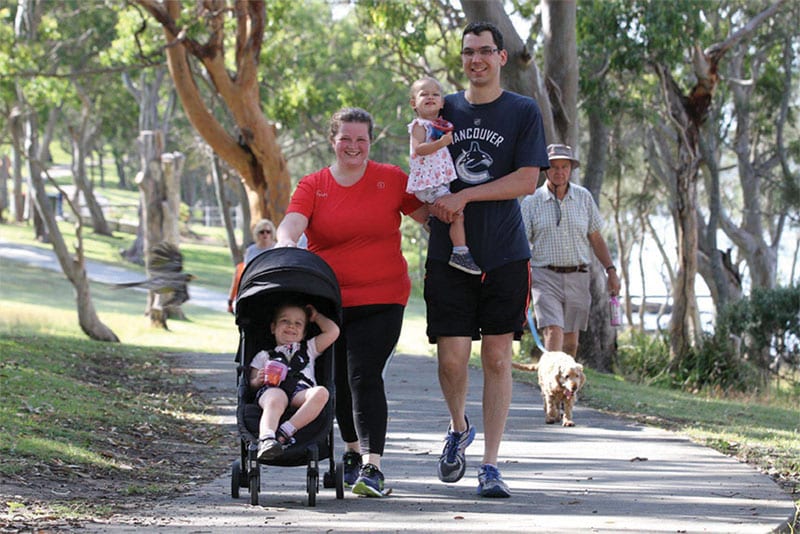Our Work
Central Coast Health Promotion Service is a service within Central Coast Local Health District. We work towards the aim of seeing a Central Coast where everyone can enjoy better health and wellbeing.
We do this by creating healthy places for our communities that promote good health across life’s journey.
By working together with the community and other partners, we provide information, programs and resources, and we advocate for healthy policy, to ensure the foundations for good health.

Our strategies
Only around a quarter of an individual’s health is impacted by the health system. This leaves other factors such as political, economic, environmental, social, cultural, behavioural and biological factors collectively bearing a much greater impact.
Central Coast Health Promotion Service aims to influence these factors in a positive way by adopting evidence-based strategies, often in partnership with local people, community organisations, other Central Coast Local Health District services, the wider health and social care system, as well as other sectors.


These strategies can take a number of forms, including:
- Community initiatives that connect people and break down the barriers that prevent them from living a healthy lifestyle.
- Physical activity and healthy eating programs aimed at different age groups.
- Information and resources that inform and support the public to improve their health and wellbeing.
- Advocating for changes in the laws, regulations, policies, institutional practices and standards that affect the personal health choices of people.
This work seeks to not only empower people to make decisions to improve their health, but ensure the conditions and environments are in place for them to do so, making the Central Coast a healthier place to live, learn, work and play.
Read more about our work in our Health Promotion Strategy 2018–2023.
Our partners
Most of our work across our priority areas is settings based. This enables us to support large segments of the Central Coast population, as well as more specific target groups who have particular needs.
Our key partners include schools, early childhood education and care services, canteens, workplaces, health professionals, local and state government agencies, as well as other organisations embedded in our communities. We also work with community leaders and individuals that have lived experiences relevant to our areas of work.
These partnerships support the co-design of health and wellbeing programs, initiatives and resources tailored to our communities.
If you can see a benefit from us working together, we’d love to hear from you. Visit our Contact Us page.

Our publications
Read our latest publications, including our strategy, annual reports, research papers and journal articles.
What is health promotion?
Health promotion is the process of enabling people to increase control over, and to improve, their health and wellbeing. It focuses on addressing and preventing the root causes of ill health rather than just treatment and cure. This involves looking beyond just individual behaviour, towards a wide range of social and environmental interventions that support people to live a healthier lifestyle.
Together with available evidence for the most effective and efficient strategies to improve population health and wellbeing, health promotion practice is guided by the Ottawa Charter. The Charter was an outcome of the World Health Organization’s first International Conference on Health Promotion in 1986.


Our service works across the five Charter areas to:
- Build public policy for health in all sectors and at all levels of government.
- Create environments that support health where people, live, work and play.
- Strengthen community action for social and environmental changes.
- Develop personal skills that support people to exercise greater control over their own health.
- Re-orient service delivery and organisational practice to promote better health.
The Ottawa Charter recognises that the major social and environmental determinants of health, such as education, income, social inclusion and access to services, lie outside the health system. Subsequent charters including The Bangkok Charter (2005) and Shanghai Declaration (2016) emphasise greater political action, intersectoral collaboration, empowerment and a focus on sectors beyond health. Additionally, at a Federal level, pricing, taxation and marketing are key drivers that can influence chronic disease risk factors.
Latest News


Get active to improve your strength and balance this April Falls

